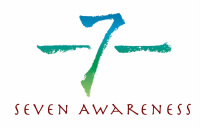 I find these diagrams, published in Nettesheim’s work De Occulta Philosophia, intriguing. I took this figure with cube, circle and stars as the starting point for an improvised movement sequence, wondering what the diagram might mean, what it might represent. This is what I came up with. The centre of the circle is the hara. This is a good place to move from. Its a good place to to be anchored in. Its a place that gives centre and stability to your inner and outer life. In traditional Japanese teachings the hara is regarded as the natural centre. Its truly where upper and lower meet. Its where our life and activity can flower from instinct. What good is the head or the heart without a stable foundation? 1 The outer circle is consciousness.... emptiness.... the space in which things happen. If we extend it in all directions it is universal consciousness that contains everything, like space. The inner circle is the kinesphere, the imaginary sphere in which the human frame moves. Looked at like this our way of being becomes more circular and flowing, rather than linear and directional. We need both of course – both being and doing. The small circle (above the figure’s head) represents something more individual. Our individual awareness. In ancient Chinese philosophy this is “heaven” as opposed to “earth.” The cube on which the figure stands is form and structure. It is shape and form in the mind and the world. We could also say that its the base of everything. When we come down to the base, the floor, the root, we feel safe. There is a security beyond all coming and going of form. The stars make me think of “constellation.” And from there I think of “astral” and of the “astral body.” This in turn makes me think of the world of desire. What does desire constellate in your life? In the diagram the man reaches and grasps the stars. Isn’t that what we do? We reach for and grasp. Without this capacity we couldn’t eat, wouldn’t love, wouldn’t fly to the stars. It is desire that takes us into the world. It is because of desire that we manipulate the world (through the hand), alter the world to our needs. This is done still, despite the electronic age, via the hands. But.... is he gripping the stars, or is he gripped by them. We say “I have a desire”, but if we’re honest we should more often say “my desires have me.” Conclusion The diagram seems to suggest that to be whole, to be well centred, these worlds – consciouness, form or structure, and desire, need to be balanced and integrated. Our spiritual nature, the world of emptiness, of awareness, needs to be balanced with form, with earthiness, with embodyment. Above all our desire nature needs to be included. Without desire we have no place in the world. However here, by desire, I don’t necessarily mean the things and conditions you want in the pursuit of happiness. Rather I mean your individuation. Your urge to be and to express who you are. Notes 1. For one of the first scholars to bring the traditional Japanese teachings to the West, see, Hara: the vital centre of man, Karlfried Graf von Dürckheim, George Allen and Unwin, London, 1962
0 Comments
|
Julian's Blog
Short pieces from Julian on all aspects of healing, psychology and spirituality Archives
April 2019
Categories
All
|

 RSS Feed
RSS Feed
